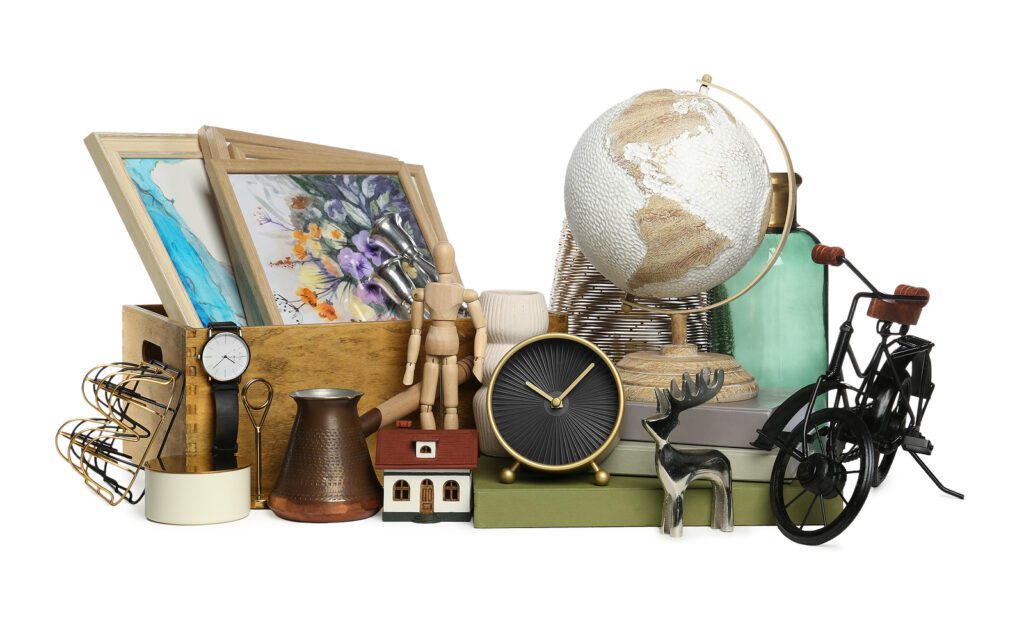Downsizing Dangers: 5 Hidden Risks of Taking Too Much Stuff to a Smaller Space

One of the biggest challenges for any senior is deciding what to bring to their new smaller space during a downsizing move. Sifting through a lifetime of acquired treasures is both overwhelming and emotional.
But, as I’ve learned over the 16 years of helping seniors downsize, resistance can still rear its ugly head even when a client hires a senior downsizing specialist or professional home organizer to help.
Some seniors default to the worst of downsizing strategies: the “move and decide” strategy. This is where they just can’t bring themselves to make those hard purging decisions, so they bring more than they should and think it’ll be easier after the move. However, they don’t understand the downsizing dangers this can create, resulting in unexpected and unpleasant repercussions on move day and beyond.

So, if you are considering a downsizing move and feel you’re heading toward a “move and decide” strategy, consider the following risks:
5 Risks to Taking Too Much Stuff

Lack of Space for Re-Settlement
When you’re moving from a larger home to a smaller space, especially one that is substantially smaller, it can be difficult to accurately gauge storage and floor space.
Bringing more than you need can make a space feel overcrowded and difficult to move around in safely, especially while trying to unpack.
Most don’t consider the number of boxes and other items that have to share space with furnishings upon delivery. In my practice, I consistently expected to have between 80 to 120+ boxes of all sizes just for a typical one or two-bedroom condo.

Safety Hazards
When you have a lot of excess items in a home, it can create tripping hazards. This is especially true on move day when there is very little room to move around boxes, extra furniture, etc.
For seniors who may be prone to falling, this can result in disastrous hip fractures or other injuries. It can also make it more difficult for a person to navigate their new surroundings, especially when they are overtired and stressed.

Increased Financial and Time Costs
The more you bring, the more time and money it will cost you. For example, any item that’s being loaded onto a mover truck has to be “safely contained”. I can’t tell you how many people over the years (who packed themselves) mistakenly assumed that the movers would take their lamps, still intact, onto the truck, delicate lamp shades and all.
Movers require that lamps be broken down into components and securely packed. In addition, all boxes must be completely enclosed and securely taped (no open-topped boxes please!) so they can be safely stacked in the moving truck.
This means for any extra, non-essential item you bring; you have the added packing material cost and packing time if you hire a professional packing team. Then there’s the loading and unloading time on the truck, unpacking time, and final disposal of used packing materials at your destination.
Given the high cost of packing materials and mover costs, this can add up quickly. You can save a lot of time and money by bringing only the most essential things that provide comfort and enjoyment in your new home.

Increased Stress and Anxiety
Have you ever been in a room or home with too much stuff? Studies have shown that an overpacked home can create a sense of unease, claustrophobia, overwhelm, or even chaos. It can make even the most generously spaced room seem much smaller than it is.
For those who are already having difficulty acclimating to smaller quarters, this can exacerbate those feelings and it can lead to depression, sleep issues, or other emotional or physical health concerns.

Difficulty Maintaining a New Space
Downsizing dangers can be created by something as simple as making a home less accessible for cleaning. It’s no surprise that a cluttered environment is also harder to clean and maintain, especially when there’s limited access to an area in the home. This can lead to a decline in a home’s overall cleanliness and livability and potentially affect a person’s health and well-being.
Seniors with a tendency toward breathing or respiratory illness, asthma, and environmental allergies are particularly susceptible to these conditions.
It also takes more time to clean a cluttered or crowded space than one that’s more accessible and manageable.
So, when preparing for a downsizing move, I strongly recommend that you make any purge and disposal decisions as early as possible. By doing so, you avoid the delayed and unnecessary stress of having to make the decisions under less favorable conditions in a smaller home. Clients who took that proactive step before their move said they felt a sense of freedom once the decision was behind them. They wished they had purged much sooner!
Deborah

P.S. Need more tips and strategies for purging and disposal for a downsizing move? Check out my easy video guide, Letting Go of Lifes Treasures: A Downsizing Guide for Purging & Disposal, in the Downsizing Made Simpler Education Series at The Downsizing Institute.
